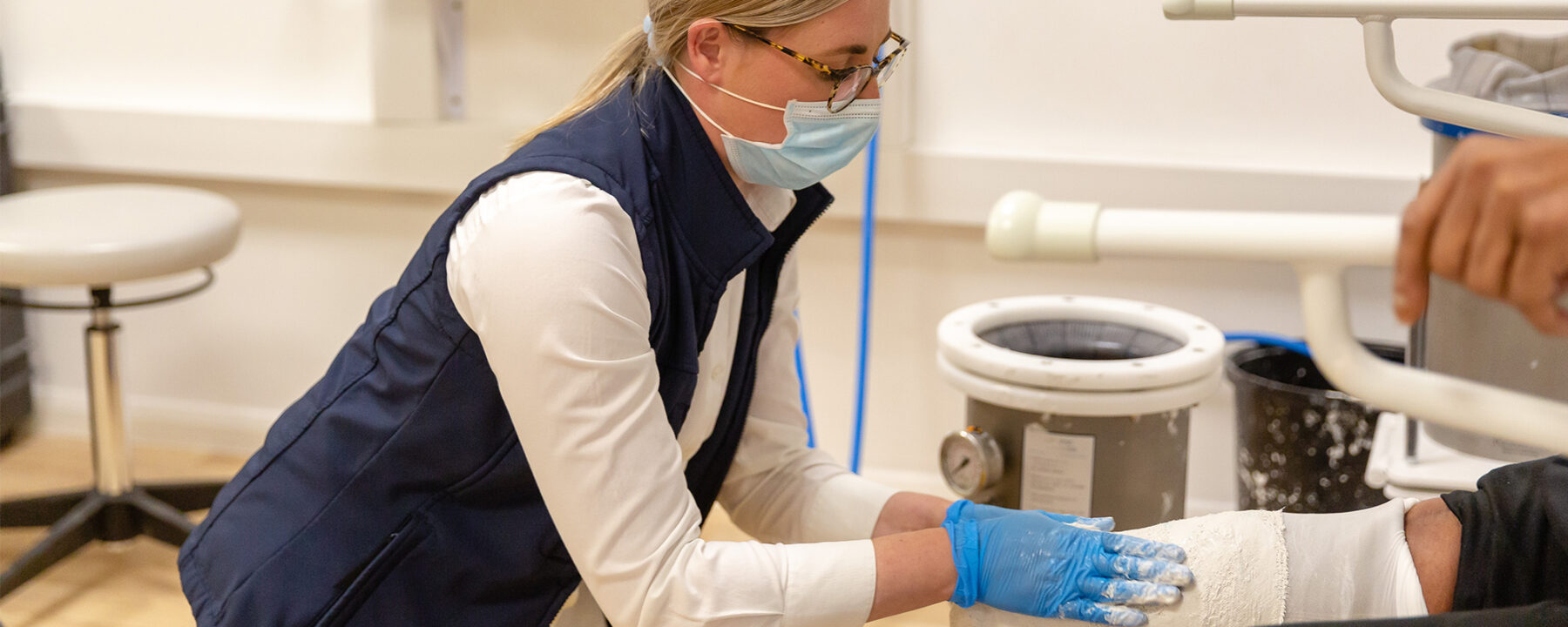
Lower Limb Casting Techniques
For many lower limb amputees, socket comfort is paramount and becomes a huge help or hindrance in their ability to lead an enriched life full of interest and activity. To ensure our patients leave our clinics in a comfortable socket that is unique to them in every way, we offer a range of casting techniques to enable the best possible fit.
These casting techniques are detailed below.
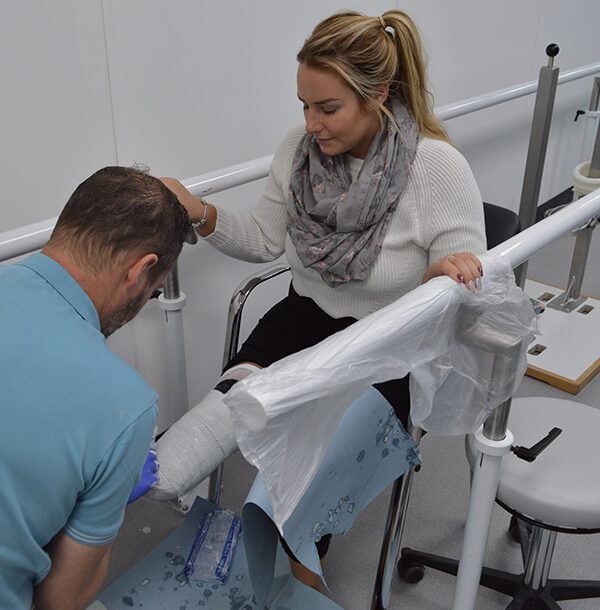
Plaster Casting
We use plaster of paris to perform the majority of our casting. We wrap a residual limb using plaster bandages to create a cast. We can then manipulate this plaster to capture the anatomy of the residual limb in a cast – sometimes we may use casting apparatuses to create a weight-bearing cast or apply additional compression. When this plaster is set it is removed from the residual limb. This is a fast and pain-free method of casting a residual limb. This negative cast is then poured with plaster of paris to create a positive mould of a residual limb ready to be rectified by your prosthetist.
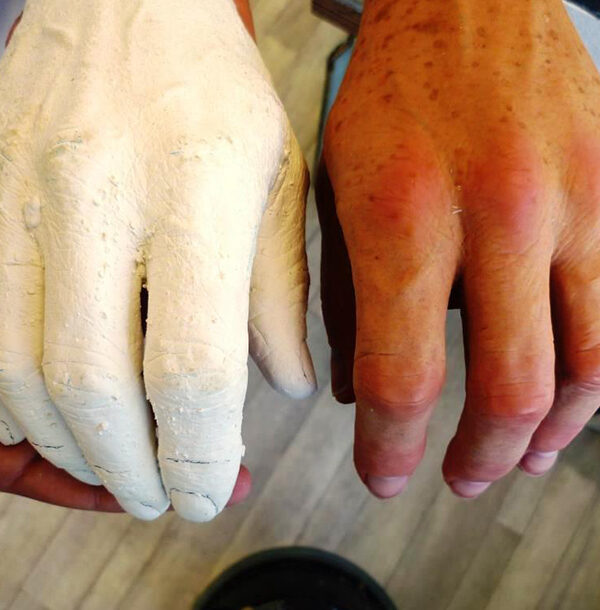
Alginate Casting
We normally use alginate to cast hands and feet, particularly for silicone applications. Alginate is one of the safest ways you can make moulds and castings of people's hands, feet, faces, or even bodies. Sodium alginate is used as an impression-making material in dentistry, prosthetics, and for creating positives for small-scale casting.
Alginate will have a working time of 8 minutes and a cure time of 10 minutes, making it a fast and comfortable way to cast.
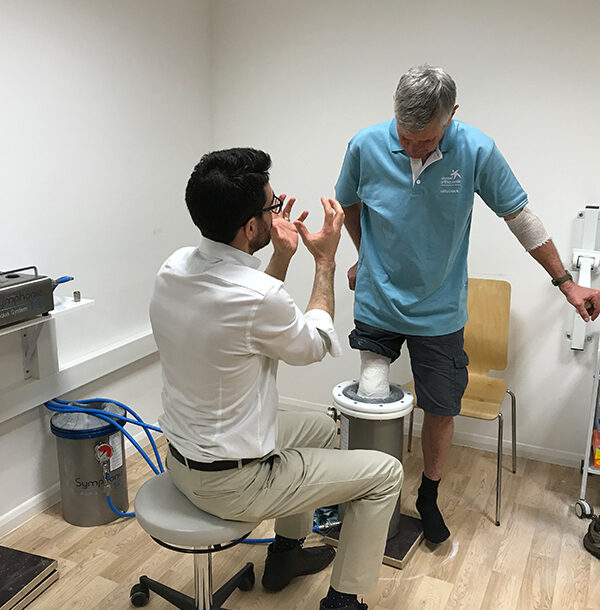
Symphonie Aqua Casting System
This advanced pressurised system is suitable for below knee, through knee and above knee levels of amputation and is available at our Southern and Midlands clinics. What makes Symphonie Aqua so advantageous is that it provides prosthetists with an optimal opportunity to cast patients under full weight-bearing conditions, unlike traditional methods. By casting this way, the prosthetist can get an accurate measurement of how the residual limb is shaped and how it behaves under weight-bearing conditions. The result is a well-fitting, and comfortable socket, which can be manufactured quickly and reliably with little modification required — adding another area of bespoke expertise to our 30-year service to amputees.
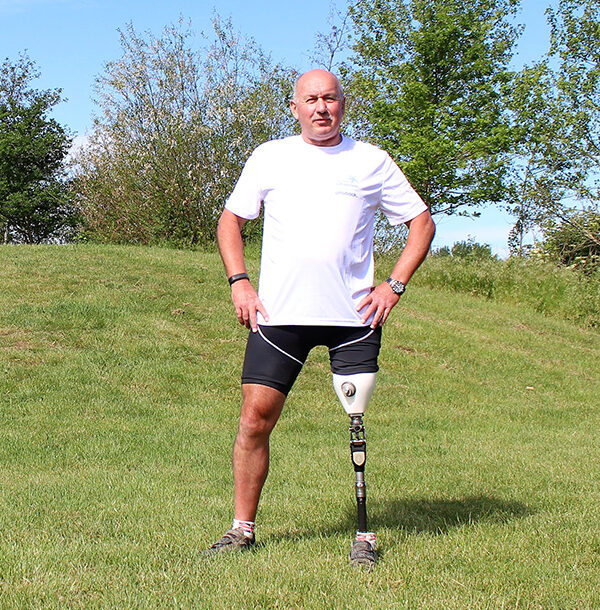
TF Design
TF Design is a modern application technique for the individual fabrication of test sockets and transfemoral interim prostheses. It represents an outstanding alternative to the classic plaster casting technique. Ottobock TF Design offers the prosthetist two options for socket design and ordering. For one, the check socket can be ordered using the measurement form or TF Design software can also be used. The advantage of the software is that your Dorset prosthetist can edit and visualise all data for a check socket or interim socket in a single process. After the modifications are complete, the data are saved and sent directly to Ottobock Service Fabrication by e-mail.
